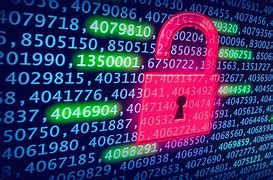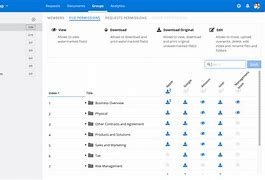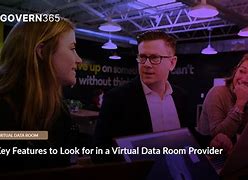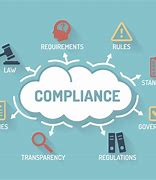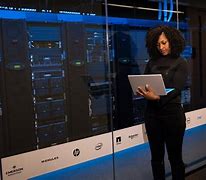
- Data Breach Prevention with Virtual Data Rooms: What You Need to Know
- What is a Virtual Data Room?
- Understanding Data Breaches and Cybersecurity
- How Virtual Data Rooms Help Prevent Data Breaches
- benefits of Using a Virtual Data Room for Data Breach Prevention
- Choosing the Right Virtual Data Room for Your Needs
- Implementing a Virtual Data Room for Data Breach Prevention
- Case Studies and Real-World Examples
- achievement Stories of Data Breach Prevention with Virtual Data Rooms
- Lessons Learned from Data Breaches and Cybersecurity Incidents
- Conclusion
- Summary of Key Takeaways
- Call to Action: Protecting Your Data with a Virtual Data Room
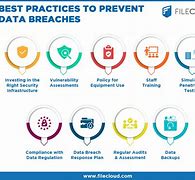
Data breaches are a growing concern for businesses of all sizes. In today’s digital world, sensitive information is constantly at risk of being compromised. A data breach can have a devastating impact on a company’s reputation, financial standing, and even its ability to operate. One effective way to mitigate this risk is by using virtual data rooms (VDRs). VDRs provide a secure and controlled environment for storing, sharing, and managing sensitive data, ensuring that only authorized personnel can access it. This article explores the benefits of using VDRs for data breach prevention, and what you need to know to make an informed decision.
With VDRs, businesses can ensure that their confidential data remains safeguarded. VDRs employ various security measures, including:
- Encryption: All data stored and transmitted through a VDR is encrypted, making it unreadable to unauthorized individuals.
- Access Controls: VDRs allow for granular control over user access, granting different levels of permissions based on roles and responsibilities.
- Auditing & Logging: Every action within a VDR is recorded, creating an auditable trail that can help track unauthorized activity and pinpoint any security breaches.
- Multi-Factor Authentication: This additional layer of security requires users to provide multiple forms of authentication before they can access the VDR.
Furthermore, VDRs help organizations streamline their data security processes and achieve compliance with regulatory frameworks, such as GDPR and HIPAA.
So, how can your company take advantage of this powerful tool? You need to carefully select the right VDR provider and platform. Look for features like robust security measures, user-friendly interfaces, and a strong commitment to compliance. You should also carefully review the provider’s reputation and customer service record before making a decision.
VDRs have become a valuable tool for organizations seeking to enhance data security and mitigate the risk of data breaches. Their security features, accessibility, and ease of use make them an attractive option for businesses of all sizes. Implementing a VDR strategy is a proactive step in protecting your valuable data, and securing the future of your business.
Data Breach Prevention with Virtual Data Rooms: What You Need to Know
In today’s digital age, data security is paramount. Companies, organizations, and individuals are constantly vulnerable to cyber threats, making data breach prevention a critical concern. Virtual data rooms (VDRs) have emerged as a powerful tool for safeguarding sensitive information, offering robust security attributes and functionalities that minimize the risk of data breaches.
What is a Virtual Data Room?
A virtual data room is a secure, cloud-based platform designed to store, manage, and share sensitive information. Think of it as a digital vault with advanced security measures in place to protect your data from unauthorized access. VDRs are widely used in various industries, including mergers and acquisitions (M&A), due diligence, legal proceedings, and intellectual property management.
Understanding Data Breaches and Cybersecurity
Before we delve into the benefits of VDRs for data breach prevention, let’s understand the fundamentals of data breaches and cybersecurity.
What is a Data Breach?
A data breach occurs when sensitive information, such as customer data, financial records, or intellectual property, is accessed or stolen by unauthorized individuals. These breaches can outcome from various factors, including:
- Malware attacks: Malicious software designed to infiltrate systems and steal data.
- Phishing scams: Deceptive emails or messages that trick users into revealing sensitive information.
- Social engineering: Manipulating individuals into providing access or revealing confidential data.
- Insider threats: Unauthorized access or misuse of data by employees or contractors.
The Cost of Data Breaches
Data breaches can have devastating consequences for businesses and individuals. The financial costs associated with data breaches are significant, including:
- Legal expenses: Fines, penalties, and settlements for regulatory violations.
- Reputation damage: Loss of customer trust and brand value.
- Operational disruption: Downtime and service interruptions.
- Recovery costs: Restoring systems and data, notifying affected individuals, and managing legal and regulatory requirements.
The Importance of Cybersecurity
Cybersecurity is the practice of protecting computer systems and networks from unauthorized access, use, disclosure, disruption, modification, or destruction. It encompasses a wide scope of techniques, technologies, and processes designed to safeguard digital information and assets. Strong cybersecurity practices are essential for preventing data breaches and ensuring the integrity of your data.
How Virtual Data Rooms Help Prevent Data Breaches
VDRs offer a thorough suite of security attributes designed to protect sensitive information from unauthorized access and cyber threats. Here are some key ways VDRs contribute to data breach prevention:
Enhanced Security attributes
VDRs employ advanced security measures, including:
- Two-factor authentication: Requires users to offer multiple forms of verification, such as a password and a unique code, to access the platform.
- function-based access control: Grants varied users access to specific documents or folders based on their functions and permissions.
- Data encryption: Encrypts data both at rest and in transit, making it unreadable to unauthorized individuals.
- Anti-virus and anti-malware protection: Continuously scans the platform for malicious software and threats.
Access Control and Permissions
VDRs allow administrators to tightly control access to sensitive information, granting specific permissions to individual users or groups. This ensures that only authorized individuals can access specific documents or folders, preventing unauthorized access and data leakage.
Encryption and Data Protection
VDRs employ robust encryption technologies to protect data from unauthorized access, even if the platform is compromised. Data is encrypted both at rest (when stored on the server) and in transit (while being transmitted over the network), ensuring that it remains secure throughout its lifecycle.
Audit Trails and Logs
VDRs maintain detailed audit trails and logs that track all user activity, including file access, downloads, and changes. These logs offer a thorough record of all actions performed within the VDR, allowing administrators to monitor user behavior and determine any suspicious activities.
benefits of Using a Virtual Data Room for Data Breach Prevention
VDRs offer numerous benefits for organizations seeking to prevent data breaches and protect sensitive information:
Reduced Risk of Human Error
By automating tasks and eliminating manual processes, VDRs reduce the risk of human error, which can lead to accidental data leaks or security breaches. With built-in security measures and access controls, VDRs minimize the potential for human mistakes that could compromise data security.
Streamlined Collaboration and Communication
VDRs offer a secure and efficient platform for collaborating on sensitive projects, allowing multiple users to access and share information securely. This streamlined collaboration process reduces the risk of data breaches by eliminating the need to share sensitive information through unsecured channels such as email or physical documents.
Improved Compliance and Regulatory Adherence
VDRs help organizations comply with data privacy regulations, such as the General Data Protection Regulation (GDPR) and the California Consumer Privacy Act (CCPA), by providing robust security attributes and functionalities. With built-in security measures, VDRs help organizations meet regulatory requirements and minimize the risk of fines or penalties.
Choosing the Right Virtual Data Room for Your Needs
selecting the right VDR for your organization’s needs is crucial for ensuring data security. Here are some key factors to consider when choosing a VDR:
Key attributes to Consider
- Security attributes: Ensure the VDR offers robust security measures, including two-factor authentication, function-based access control, data encryption, and audit trails.
- User-friendliness: The VDR should be easy to use and navigate for both administrators and end users.
- Scalability: The VDR should be able to handle your organization’s current and future data storage and sharing needs.
- Integrations: Consider whether the VDR integrates with your existing systems and applications.
Security Certifications and Standards
Look for VDR offerrs that have obtained industry-recognized security certifications, such as ISO 27001, SOC 2, and HIPAA. These certifications demonstrate that the VDR offerr has met strict security standards and practices.
User-Friendliness and Ease of Use
select a VDR that is user-friendly and intuitive for both administrators and end users. A user-friendly interface makes it easier to manage access, share documents, and track user activity.
Implementing a Virtual Data Room for Data Breach Prevention
Once you’ve chosen a VDR, it’s crucial to implement it effectively to maximize its security benefits. Here are some optimal practices to follow:
Security optimal Practices
- Strong passwords: Encourage users to create strong passwords and avoid using common or easily guessed passwords.
- Regular password changes: Implement a policy requiring users to change their passwords regularly.
- Security awareness training: Conduct regular security awareness training for all employees and contractors to educate them about common cyber threats and optimal practices for protecting sensitive information.
- Multi-factor authentication: Enable multi-factor authentication for all user accounts to add an extra layer of security.
- Data backups: Regularly back up all sensitive data to ensure that it can be restored in case of a breach or system failure.
Training and Awareness Programs
offer regular training and awareness programs to educate users about data security optimal practices, common cyber threats, and the importance of using the VDR securely. This training should be tailored to the specific functions and responsibilities of individual users.
Regular Security Audits and Assessments
Conduct regular security audits and assessments to determine vulnerabilities and ensure that the VDR is effectively protecting sensitive information. These audits should be performed by independent security professionals with expertise in data security and compliance.
Case Studies and Real-World Examples
Numerous case studies and real-world examples demonstrate the efficacy of VDRs in preventing data breaches.
- M&A Due Diligence: VDRs are widely used during mergers and acquisitions (M&A) due diligence, allowing potential buyers to access sensitive financial and operational information securely.
- Legal Proceedings: VDRs are essential in legal proceedings, providing a secure platform for storing and sharing sensitive documents, such as legal briefs, depositions, and evidence.
- Intellectual Property Management: VDRs are used to protect intellectual property by providing a secure platform for storing and sharing patents, trademarks, and trade secrets.
achievement Stories of Data Breach Prevention with Virtual Data Rooms
- A leading pharmaceutical company: effectively prevented a data breach by using a VDR to manage sensitive clinical trial data, ensuring that the data was protected from unauthorized access.
- A large financial institution: Used a VDR to secure customer data during a merger, preventing data leaks and ensuring compliance with privacy regulations.
Lessons Learned from Data Breaches and Cybersecurity Incidents
- Proactive security: It’s essential to be proactive in protecting sensitive information by implementing robust security measures and optimal practices.
- Employee training: Educating employees about data security threats and optimal practices is crucial for preventing data breaches.
- Regular security assessments: Regular security audits and assessments help determine vulnerabilities and ensure that security measures are effective.
Conclusion
Virtual data rooms are a vital tool for organizations seeking to prevent data breaches and protect sensitive information. By providing robust security attributes, access control, and data protection capabilities, VDRs offer a secure and efficient platform for storing, managing, and sharing sensitive information.
Summary of Key Takeaways
- VDRs offer a thorough suite of security attributes, including two-factor authentication, function-based access control, data encryption, and audit trails.
- VDRs help reduce the risk of human error, streamline collaboration, and improve compliance with data privacy regulations.
- Choosing the right VDR requires considering key attributes, security certifications, and user-friendliness.
- Implementing a VDR effectively involves security optimal practices, training and awareness programs, and regular security audits and assessments.
Call to Action: Protecting Your Data with a Virtual Data Room
Don’t wait for a data breach to happen. Take proactive steps to protect your data by implementing a virtual data room. By adopting a VDR and following security optimal practices, you can minimize the risk of data breaches and ensure the security of your sensitive information.
